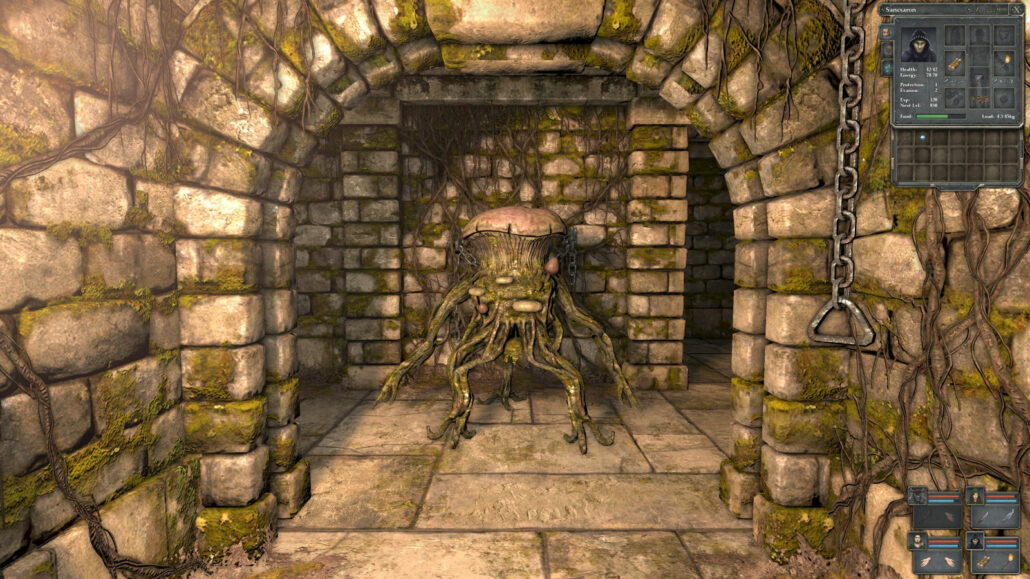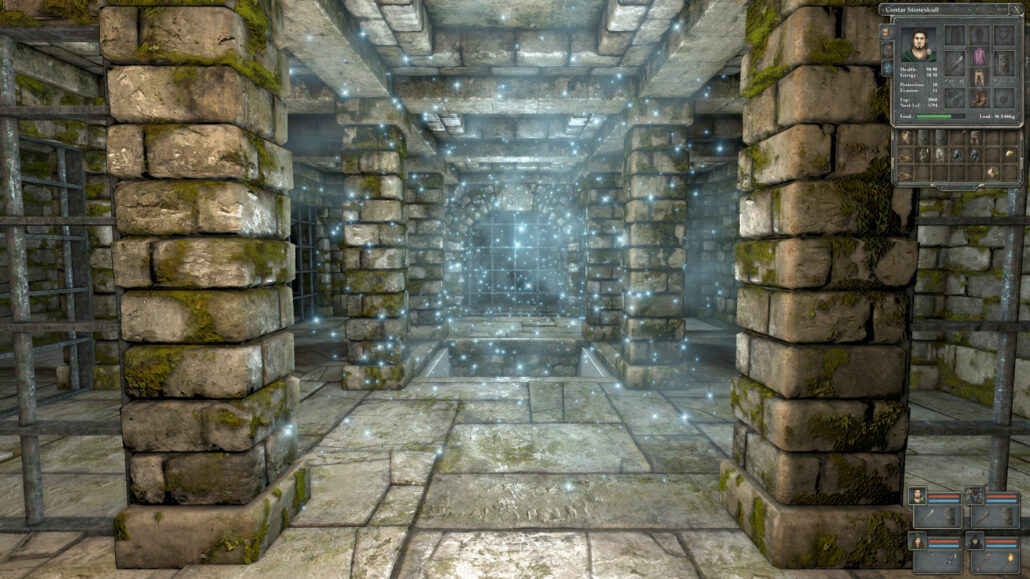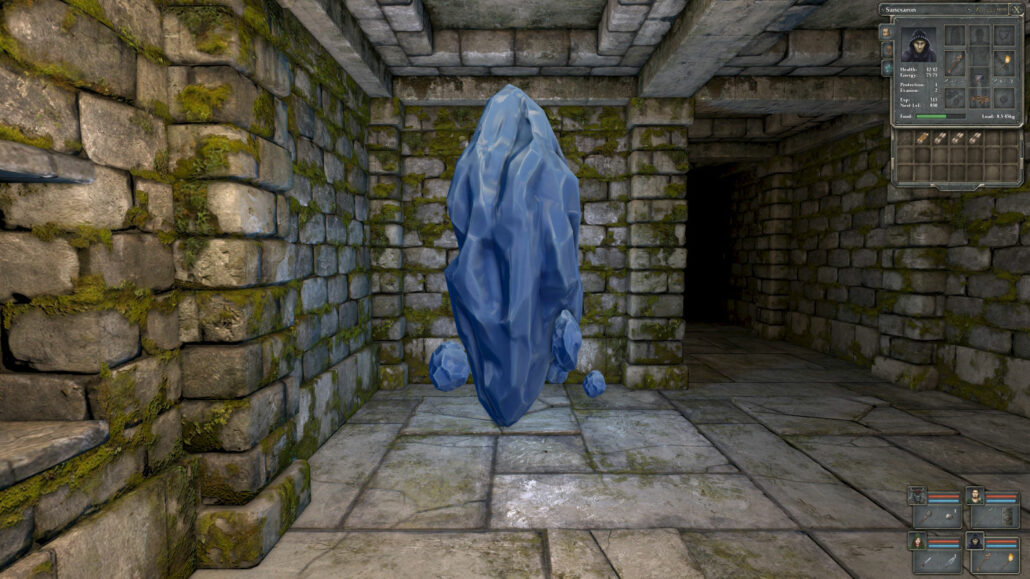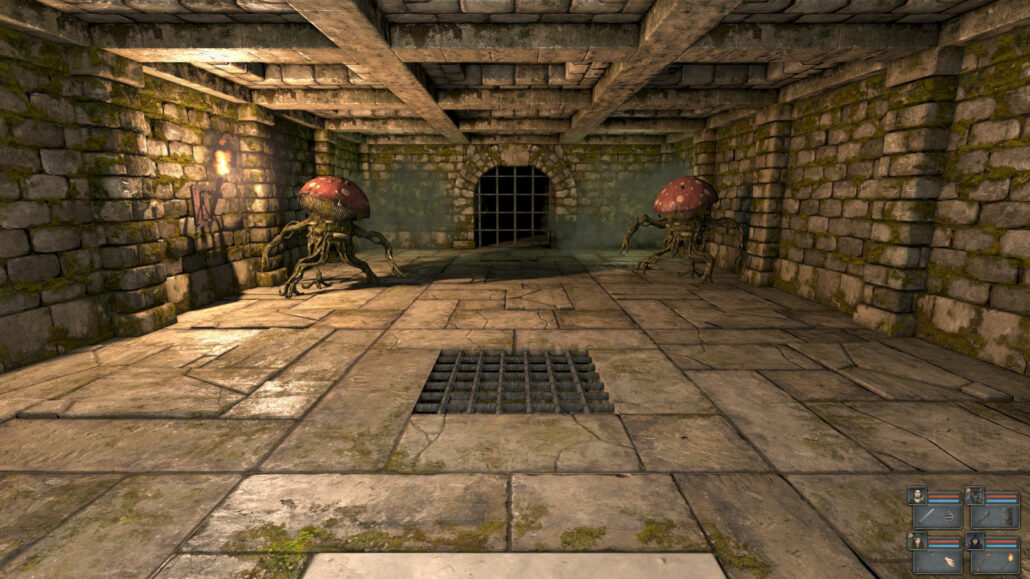Developer: Almost Human | Released: 2012 | Genre: RPG, First Person
Legend of Grimrock was another one of those that I kept postponing for years because of the majority of reviews claiming that it was very difficult. It did have a difficulty selector though, and I made sure to choose the easiest one as I usually do anyway, when this is available. Fearing a level of ruthlessness I try not to allow myself these days, my plan was for an hour of gameplay for Short Sessions.
But damn, this game was fun! I ended up playing it for almost 5 hours.

This first person RPG is supposedly a modern take on Dungeon Master, which I wouldn’t know since I never played that. However, I did know a lot more about the another inspiration, Eye of the Beholder, both from seeing the game on the Amiga back in the day, but also because an awesome version of it was recently ported to the Commodore 64. I’ve watched a lot of development videos of this.
If you’re still tinkering with the C64 today, go check it out. It’s fantastic.
Going back to Legend of Grimrock, the game moved in grid steps like on a chess board. I could move in all four directions and also rotate. Mouselook was there, but I rarely used it. I selected a premade party of four that was thrown almost naked into a mountain dungeon for crimes I could only guess at. Time to walk around in the dark dungeon and pick up armor, weapons, solve puzzles, and fight monsters.
I really liked the minimalistic take. Often an RPG requires significant preparations with a lengthy tutorial, learning the many features and windows, maybe even writing details down in a notebook. This barely had four portraits in the corner with the option of clicking one to view stats, level up, a small inventory, and a paper doll for armor and weapons. It didn’t take long to check that out.

The game had a strong focus on puzzles. I had to pay attention to differently looking bricks on the wall for opening secret doors. Apart from navigating the maze tunnels (thanks goodness for the automap), the puzzles required me to find keys, place rocks on pressure plates (sometimes through a grating) to close trap doors, use teleporters (that looked like they were inspired by Descent), and much more.
When I came across a monster such as a big snail, a fungus humanoid, spiders or even skeleton soldiers, I had to right-click weapons placed in hand icons below the portraits. Fights were real-time, and there was a significant cooldown on attacks of any kind. The mage in my party could click his wand, then one or more of nine elemental power types in a 3×3 grid. For a long time I just used a fire spell.
The monsters didn’t have health bars. Was it close to dying? Not sure.
The portraits could be rearranged and I made sure the two fighters were in front, with the rogue and the mage in the back. To reach the monsters, the rogue was given a spear. Health and mana could be restored by resting (which I could break off as soon as the bars were full) but it required me to eat food. If the food bars were empty, resting didn’t refill the health and mana bars anymore.

Luckily, each level of the dungeon often had one big blue crystal for restoring health, mana and even revive characters killed in action. A shame it didn’t refill the food bars too. Speaking of dead characters, there was a curious thing about this – although incapacitated, I could still store inventory items!
I guess it sort of made sense? After all, they’re still carrying the corpse around.
Each level ended with a set of stairs leading down to the next. Finding food was actually a problem in the third level and onwards. The spiders in this level didn’t drop food items and I ran out. This forced me to run all the way back to the blue crystal for replenishing, since resting didn’t do anything anymore.
The spiders easily poisoned all my characters, and there was no mercy regarding this. It did damage over a very long time before the poison waned. I could use a mortar to combine a plant and an empty flask for producing antivenom, but flasks were also rare and so I usually made health potions instead.
I didn’t find a bow for my rogue for the longest time. They hid this type of weapon too well.
Sleeping sometimes showed animated gears rotating and a few mysterious sentences.
The spell combinations on the 3×3 grid actually didn’t require me to find a spell scroll describing the button combinations to push. I could perform any combination straight away, as long as I had the required spell schools with enough points put in them.
Sometimes it was beneficial dropping down into pits below trap doors. This could lead to a few secrets, and there was always a teleporter for getting back up again.
Some challenges had runes on the wall with a tip about what I needed to do.
I got stuck at the puzzle in level 3 with the two teleporters rotating around a trap door. I figured it out without help, but the solution sure was convoluted. Lots of triggering the right pressure plates and a timely run through a raised door.

It was possible to dodge around and kite enemies instead of just taking the beating. It felt a little cheesy to begin with, but the monsters were so powerful later that it was pretty much necessary.
Although not a roguelike (it even had quicksave and quickload) it still got too tough for my liking at level 4. It started with an unavoidable fight that I had to retry at least half a dozen times before finally beating it with all four party members alive. A lot of kiting was necessary. I had to survive it perfectly since there was no blue crystal waiting around the corner to revive any fallen comrades.
Then came an abundance of teleporter puzzles and more tough opponents, and it started feeling too much like a general hassle. So I finally decided this causal gamer had seen enough of the game.
Abandoned after 4.5 hours.


